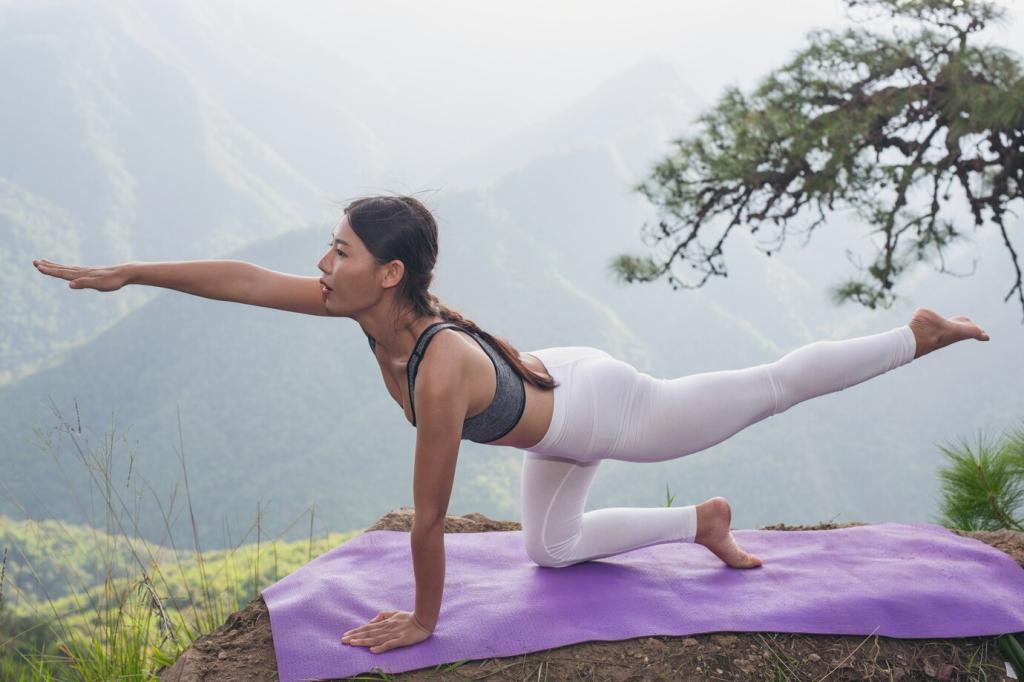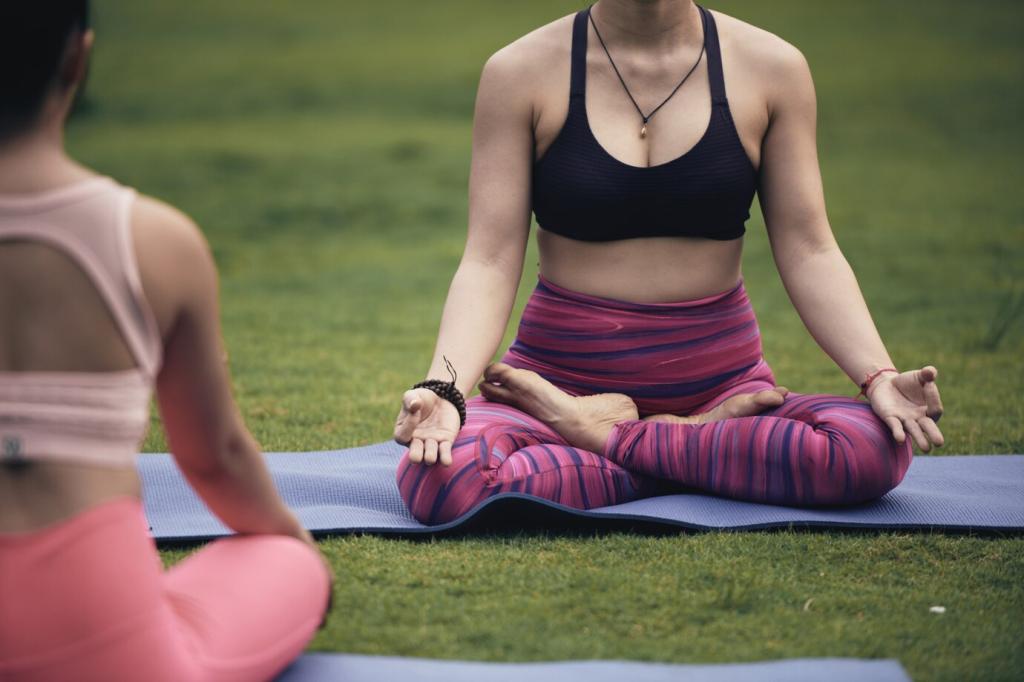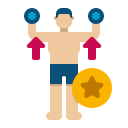Power Yoga Sessions for Enhanced Flexibility
Why Power Yoga Supercharges Flexibility
As your breath-linked flow raises temperature, collagen-rich tissues become more pliable, microcirculation improves, and nervous system guarding eases. Heated movement prepares fascia to glide, reducing stiffness without forcing range. After eight consistent weeks, many practitioners report hamstrings releasing earlier in class and lingering freedom during walks and desk time.
Essential Warm-Up and Opening Flow
Start with three rounds of box breathing to focus, then transition to ujjayi through gentle cat-cow, low lunges, and shoulder rolls. Keep the breath audible and even. Aim for smooth transitions over speed, noticing heat bloom across hips, hamstrings, and back before larger poses ask for extra depth.
Sun Salutation A builds warmth quickly; add half splits and low lunge variations between rounds to tease open hamstrings and hip flexors. In Salutation B, emphasize long exhalations moving into chair and warrior. Commit to mindful stepping rather than jumping if your range or joints feel tender today.
Soften knees in forward folds to hinge at hips, press big toe mound to wake inner lines, and draw lower ribs gently inward to protect your back. In lunges, magnetize thighs toward each other to stabilize hips. Ask questions below about any cue, and we will refine it in next week’s practice.
Targeted Sequences: Hips, Hamstrings, and Spine
Move from crescent to lizard, to skandasana, then flying low lunge pulses with steady breath. Add supported pigeon with an active back foot to maintain engagement. Keep exhalations slightly longer than inhalations to encourage release. Tell us which hip opener felt most meaningful, and we will build a micro-sequence around it.

Lightly constrict the back of your throat to create a steady oceanic tone. Match movement to breath like counting music, so transitions stay smooth. When intensity climbs, accent the exhale to signal safety. Notice how even breath changes a tough pose from a fight into a conversation with your body.
Breathwork and Pace for Deeper Release
Injury-Smart Flexibility Gains
Apply small, consistent increases in hold time, reps, or complexity rather than dramatic leaps. Add pulses, isometric squeezes, or longer exhales. Track changes weekly, not daily. If new intensity lingers beyond forty-eight hours as sharp pain, scale back and ask for guidance in the comments for individualized adjustments.
Measuring Progress and Staying Inspired
Record breath ratios, hold times, and how poses felt rather than only how they looked. Noting small improvements builds confidence and guides smart adjustments. Post your favorite tracking template, and we will share a printable version tailored to our Power Yoga Sessions for Enhanced Flexibility community.

Measuring Progress and Staying Inspired
Try a seven-day hip focus or a ten-minute hamstring finisher after each practice. Keep stakes light and consistency high. Use simple cues like long exhale and even spine across the week. Tell us which challenge you are choosing today, and we will check in with encouragement and adjustments midweek.
